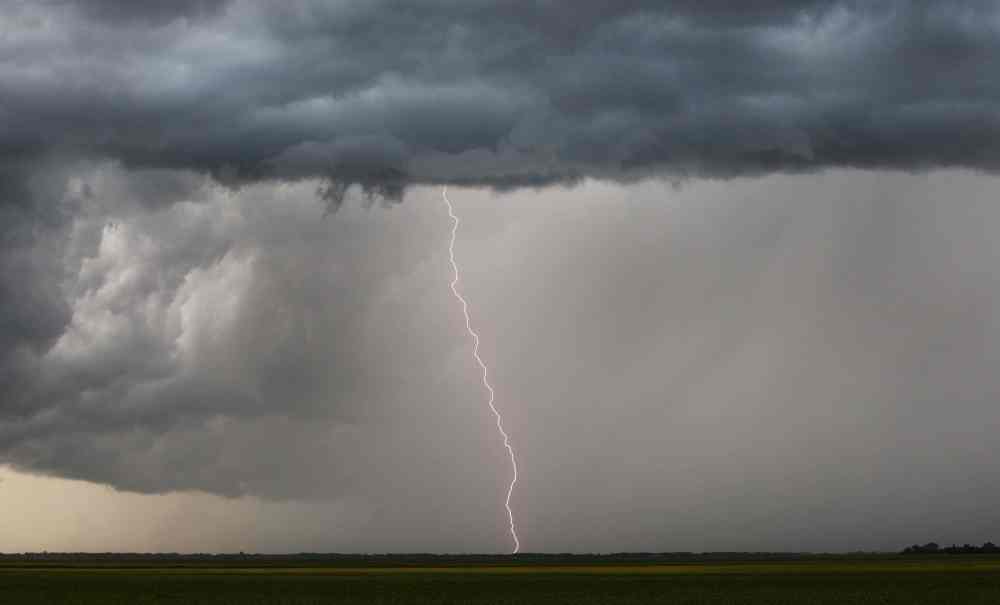Lightning strikes may jolt Arctic ecosystems: study
Advertisement
Read this article for free:
or
Already have an account? Log in here »
To continue reading, please subscribe:
Monthly Digital Subscription
$0 for the first 4 weeks*
- Enjoy unlimited reading on winnipegfreepress.com
- Read the E-Edition, our digital replica newspaper
- Access News Break, our award-winning app
- Play interactive puzzles
*No charge for 4 weeks then price increases to the regular rate of $19.00 plus GST every four weeks. Offer available to new and qualified returning subscribers only. Cancel any time.
Monthly Digital Subscription
$4.75/week*
- Enjoy unlimited reading on winnipegfreepress.com
- Read the E-Edition, our digital replica newspaper
- Access News Break, our award-winning app
- Play interactive puzzles
*Billed as $19 plus GST every four weeks. Cancel any time.
To continue reading, please subscribe:
Add Free Press access to your Brandon Sun subscription for only an additional
$1 for the first 4 weeks*
*Your next subscription payment will increase by $1.00 and you will be charged $16.99 plus GST for four weeks. After four weeks, your payment will increase to $23.99 plus GST every four weeks.
Read unlimited articles for free today:
or
Already have an account? Log in here »
Hey there, time traveller!
This article was published 12/04/2021 (1694 days ago), so information in it may no longer be current.
There are two principal triggers for wildfires — human ignition and lightning — and climate change could more than double the amount of lightning seen in Canada’s northern reaches by the end of the century, according to a study from the University of California Irvine.
The study, published this month in the academic journal Nature Climate Change, states that in an emissions scenario where greenhouse gases are emitted at status quo levels, the Arctic across Canada and Eurasia is likely to witness this increase in lightning flash rates.
“There’s some observational evidence showing the lightning already started to increase,” lead researcher Yang Chen told the Free Press.

Lightning is not traditionally a common occurrence in the Arctic, as warm masses of air need to accumulate in order to form the conditions for a thunderstorm. However, the Arctic is warming between two and three times the rate of the global average and has already witnessed more than 2 C of warming.
That warmer air also allows for more moisture the be held in the atmosphere, which is another precursor for lightning to occur.
“Basically, with the temperature increase, we found in the Arctic region both the energy you need to drive (the conditions for a storm) as well as the water vapour in the atmosphere is increased. So that will drive the increase in lightning,” Chen said.
The study indicates that by the year 2100 flash rates will be comparable to current levels 480 km to the south in boreal forests.
The increase in lightning frequency will particularly affect tundra and taiga ecosystems, where more fires would likely increase the rate of permafrost thaw. The paper notes permafrost is a significant source of sequestered carbon — on par with the amount of carbon currently in Earth’s atmosphere, and far more significant than the carbon stored in forests.
“Lightning-triggered fires in the Arctic tundra, for example, can emit as much carbon per unit area to the atmosphere as boreal forest fires,” the paper reads.
Because fires on the tundra eliminate mosses and other organic matter on the surface, fires allow for deeper penetration of solar rays that allow for further thaw of permafrost, and the release of carbon.
The research shows yet another instance where the more the world warms, the more the planet will amplify the warming in a positive feedback loop.
The changes could also speed up the process of Boreal forest expanding into the Arctic and transforming tundra into a Boreal ecosystem.
Different ecosystems will witness this increase differently, the paper says, but areas along the Boreal tree line that transition into the tundra ecosystem will see a two- to three-fold increase in lightning rates. Such transition zones exist across northern Manitoba.
sarah.lawrynuik@freepress.mb.ca

